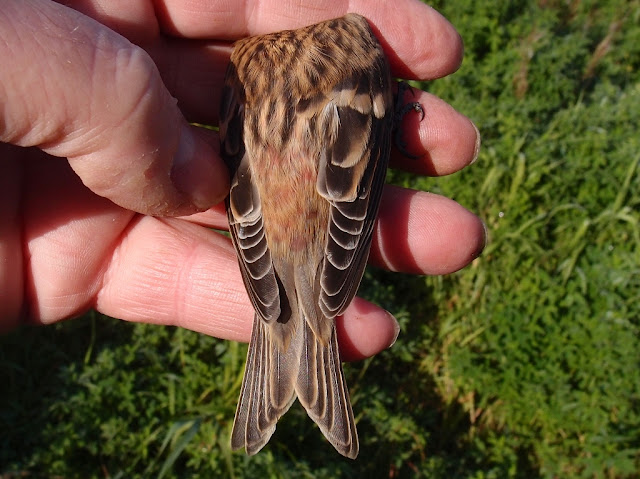 |
| These birds show some of the variation in ground colour of the birds caught today. Ideally they would have been photographed side by side but I don't have enough hands for that. |
 |
| Although there have been a lot more Redpolls than usual this month the number moving through the site is likely to increase further during October. |
Ringing totals for 30/09/15 were: Sparrowhawk 1; Blackcap 3; Chiffchaff 3; Goldcrest 12, Great Tit 1; Treecreeper 2; Lesser Redpoll 7. Total 29 new birds.
 |
| I don't catch Treecreepers very often but 4 have been caught in the last 2 days. |
Goldcrest 258
Lesser Redpoll 158
Chiffchaff 125
Goldfinch 60
Blackcap 56
..........................and it all starts again tomorrow.














































